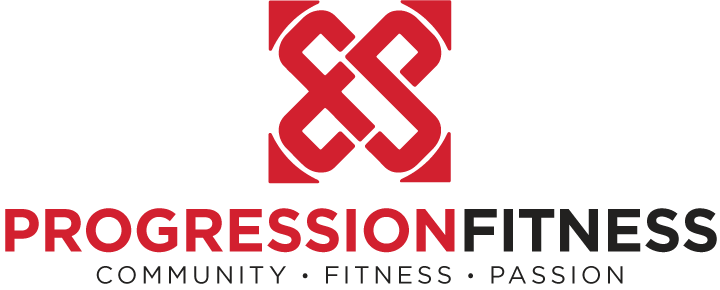Learn how Progression Fitness in Rochester, MN, group exercise classes provide motivation, proper form, variety, and a sense of community, promoting emotional well-being and business success.

Group Exercise Classes: Fostering a Supportive Fitness Community
The Benefits of Group Exercise Classes
Group exercise classes are pivotal in building a supportive fitness community by providing motivation and inspiration from classmates and creating a supportive environment for fitness goals. Professional trainers in these classes teach proper form to prevent injury, ensuring safe and effective workouts, which is essential for fostering a supportive environment. Moreover, the variety offered by group classes prevents workout plateaus and encourages regular attendance for sustained motivation, contributing to the development of a supportive fitness community. Seniors, in particular, benefit cognitively and emotionally from engaging in group exercise programs, promoting a sense of accomplishment and reducing stress, thus contributing to the supportive environment within the fitness community.
 Building Community in Group Exercise Classes
Building Community in Group Exercise Classes
Building community among class participants and clients strengthens their commitment and motivation to exercise, fostering a sense of belonging and support within the fitness community. Trainers and instructors play a crucial role in fostering community by creating acceptance, personal connections, and shared experiences to build a tight-knit community within group exercise classes. Additionally, incorporating a sense of community (SOC) in a group exercise intervention can significantly improve participant adherence, leading to exceptionally high program adherence rates and reinforcing the supportive fitness community.
Strategies for Fostering Community
Coaches at Progression Fitness use various strategies to facilitate group interactions and individual feedback, creating an engaging and supportive atmosphere within group exercise classes, which is fundamental for nurturing a supportive fitness community. Techniques such as partner work, encouraging conversation, and venturing outside the gym effectively build community and foster connections among participants, further strengthening the supportive fitness community. Acceptance, personal connections, and shared experiences are essential for building a tight-knit community within group exercise classes, contributing to a supportive environment.
 The Social and Emotional Impact of Group Exercise
The Social and Emotional Impact of Group Exercise
Group exercise programs promote emotional well-being by providing a sense of accomplishment, reducing stress, and fostering camaraderie and support, contributing to holistic health and developing a supportive fitness community. These programs can be customized to accommodate physical limitations and different fitness levels, enhancing social engagement and impacting the overall quality of life within the fitness community.
The Business Benefits of Building Community
The Progression community serves as a differentiator in a saturated fitness marketplace, driving business, keeping people engaged, and fostering accountability and motivation for continued participation within the Progression Fitness community. Coaches and instructors act as facilitators of friendship and meaningful connections in the gym environment and beyond, creating a strong and loyal client base, thus contributing to the supportive community.
Conclusion
Group exercise classes at Progression Fitness in Rochester MN play a vital role in fostering a supportive fitness community by providing motivation, emotional well-being, and business success, creating a sense of belonging and support within the fitness community.
 Frequently Asked Questions (FAQs)
Frequently Asked Questions (FAQs)
- How do group exercise classes contribute to building a supportive fitness community? Group exercise classes build a supportive fitness community by providing motivation and inspiration, teaching proper form to prevent injury, offering variety in workouts, and promoting emotional well-being, camaraderie, and support, thus fostering a sense of belonging within the fitness community [1].
- What are the benefits of participating in group fitness classes for motivation and inspiration? Participating in group fitness classes offers motivation and inspiration from classmates, creates a supportive environment for fitness goals, and prevents workout plateaus, thus sustaining motivation within the fitness community.
- How do professional trainers in group exercise classes teach proper form to prevent injury? Professional trainers in group exercise classes teach proper form to prevent injury, ensuring safe and effective workouts, which is essential for fostering a supportive environment within the fitness community.
- How do group exercise programs benefit seniors in managing chronic health conditions and preventing functional decline? Group exercise programs benefit seniors by promoting emotional well-being, reducing stress, fostering camaraderie and support, and accommodating physical limitations, thus contributing to the supportive environment within the fitness community.
- In what ways do group exercise programs promote emotional well-being and camaraderie for seniors? Group exercise programs promote emotional well-being and camaraderie for seniors by providing a sense of accomplishment, reducing stress, and fostering support, thus contributing to the holistic health and supportive fitness community.
- What role do trainers and instructors play in fostering community within group exercise classes? Trainers and instructors play a crucial role in fostering community by creating acceptance, personal connections, and shared experiences to build a tight-knit community within group exercise classes, contributing to the supportive fitness community.
- How does community involvement in group exercise classes lead to intrinsic motivation and mental health benefits? Community involvement in group exercise classes leads to intrinsic motivation and mental health benefits by fostering a sense of belonging and support, thus contributing to the supportive fitness community.
- What strategies are recommended for facilitating a sense of community in exercise interventions to improve adherence and avoid attrition? Strategies such as facilitating group interactions, individual feedback, partner work, and encouraging conversation are recommended for fostering community and improving adherence, thus contributing to the supportive fitness community [3].
- What impact does a sense of community have on participant adherence in high intensity functional training (HIFT) interventions? A sense of community (SOC) significantly improves participant adherence, leading to exceptionally high program adherence rates, thus reinforcing the supportive fitness community.
- How do group exercise classes add variety to workouts and prevent plateau? Group exercise classes add variety to workouts, prevent plateau, and encourage regular attendance for sustained motivation, contributing to the supportive fitness community [1].
